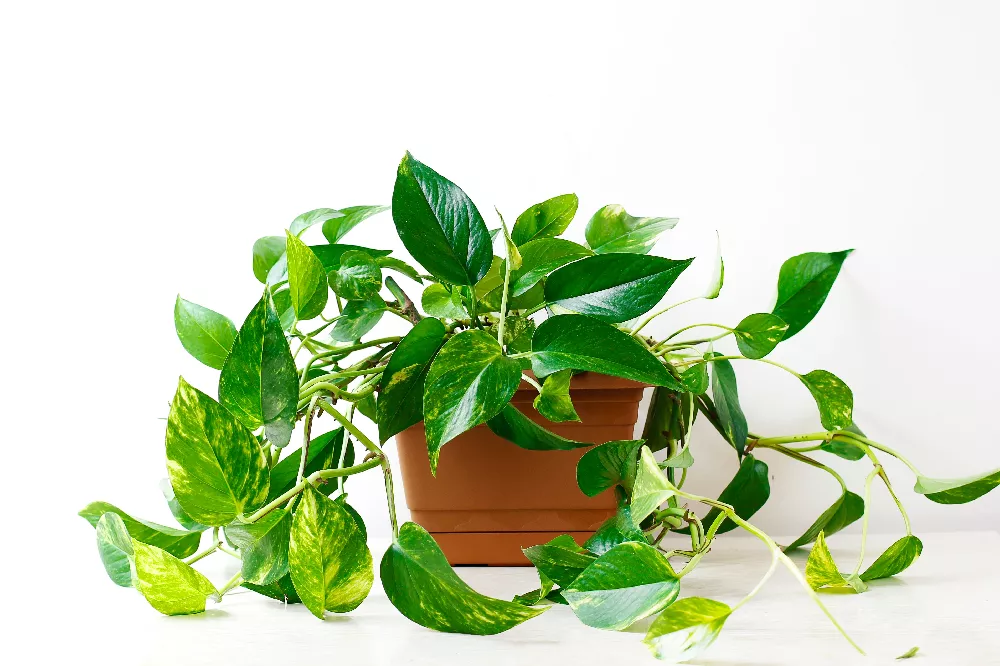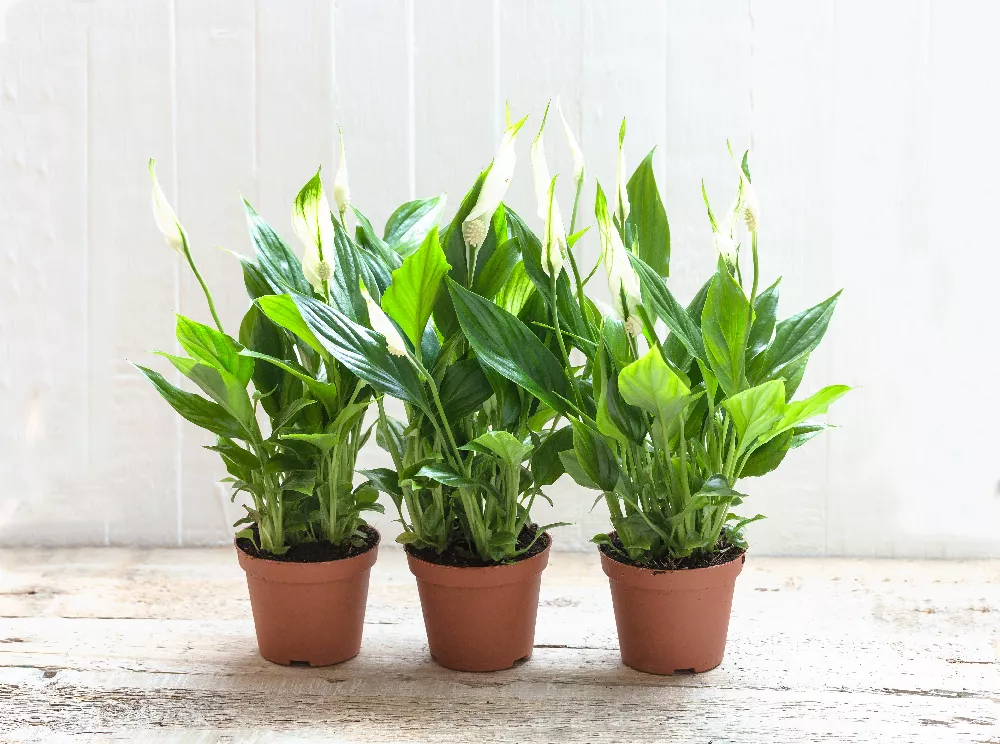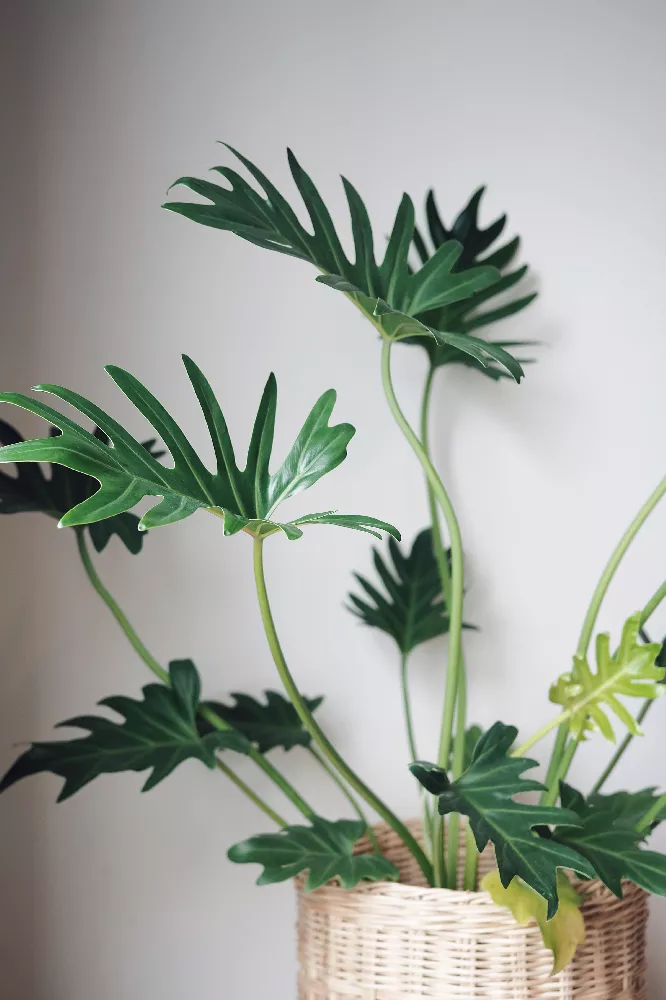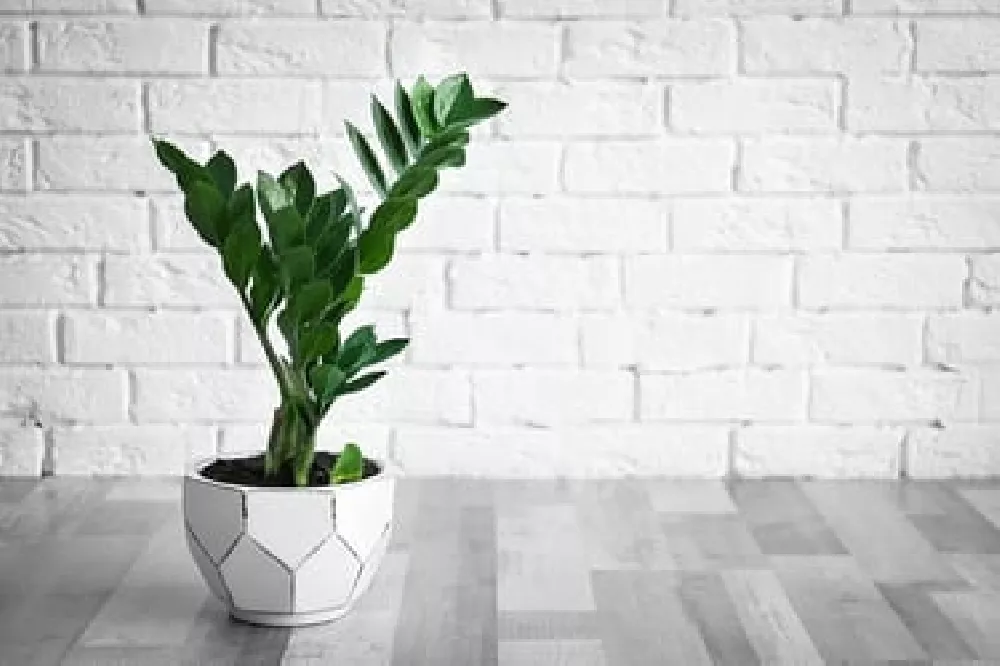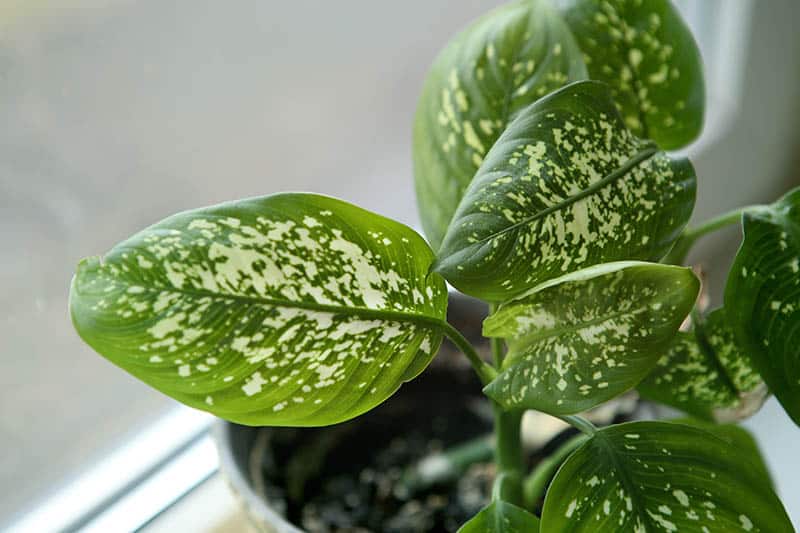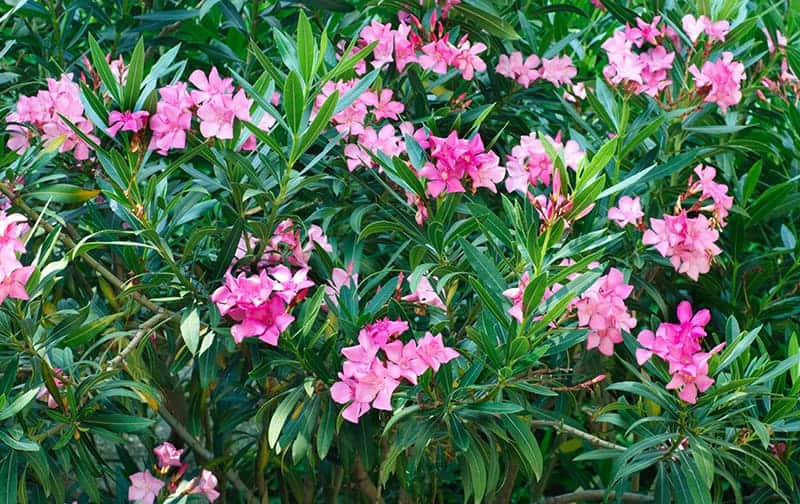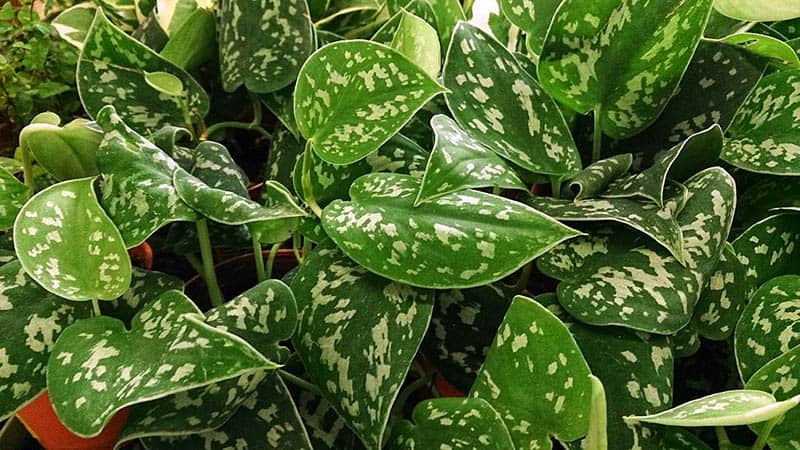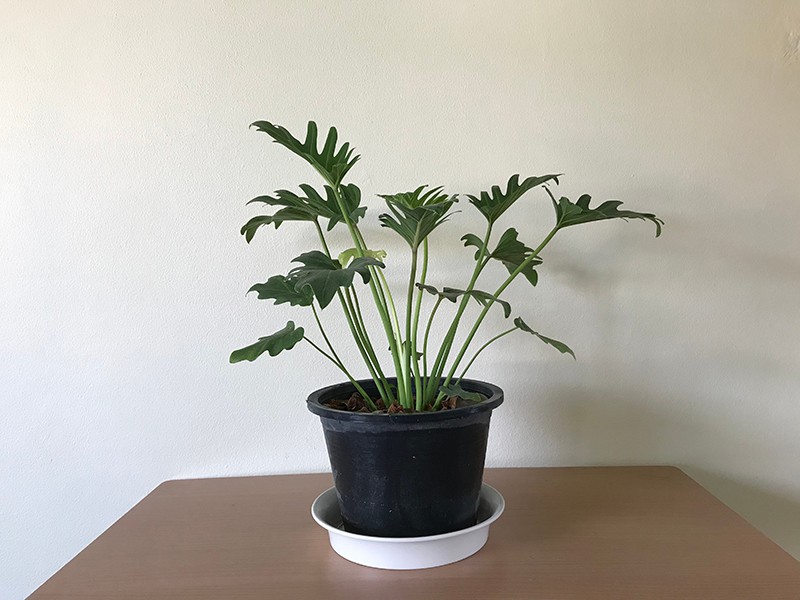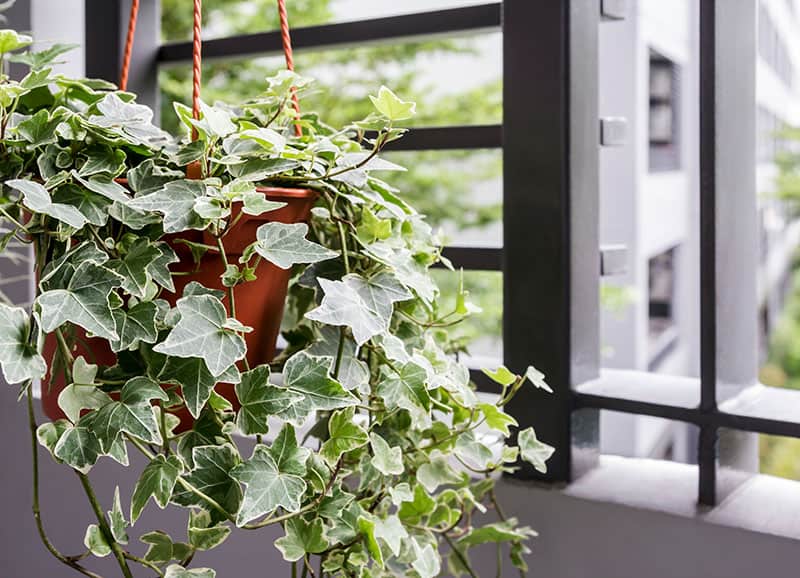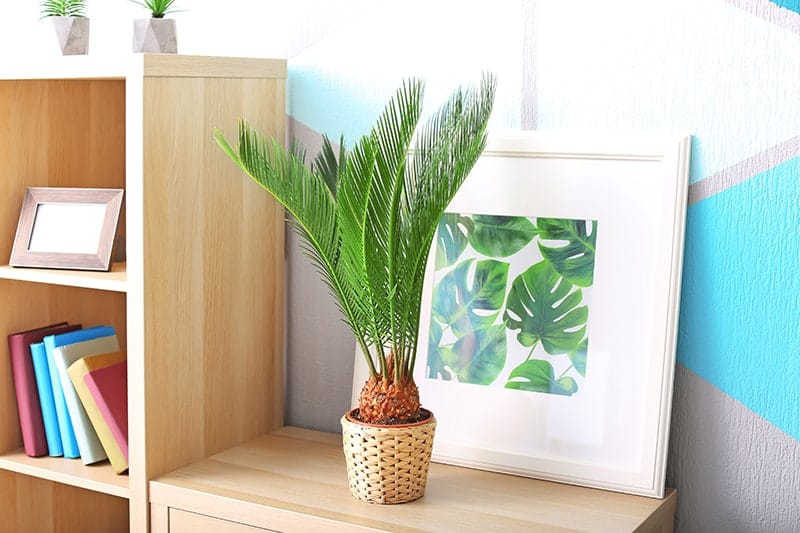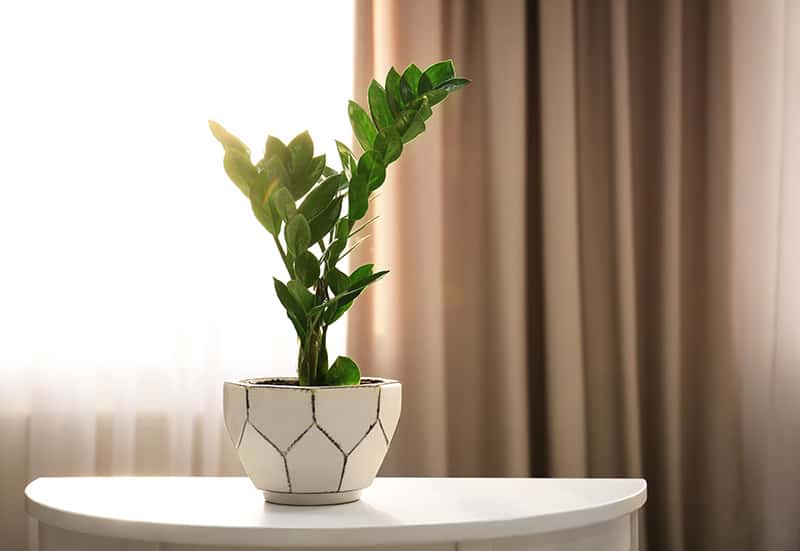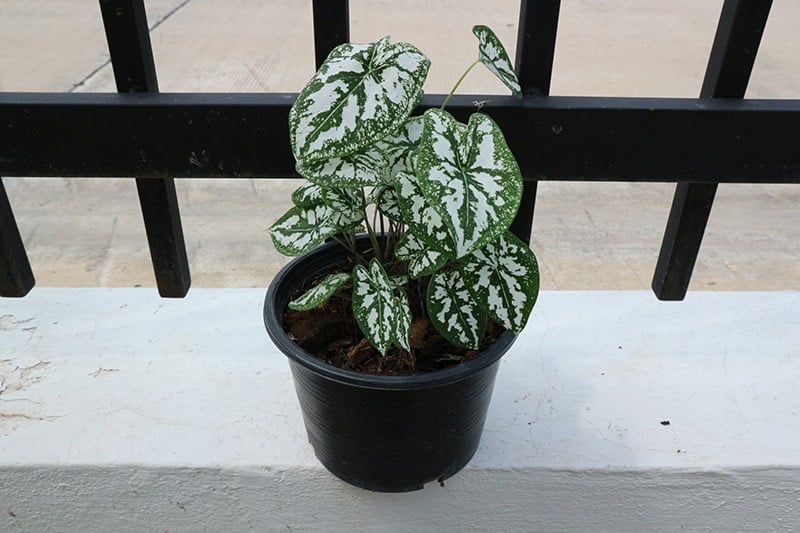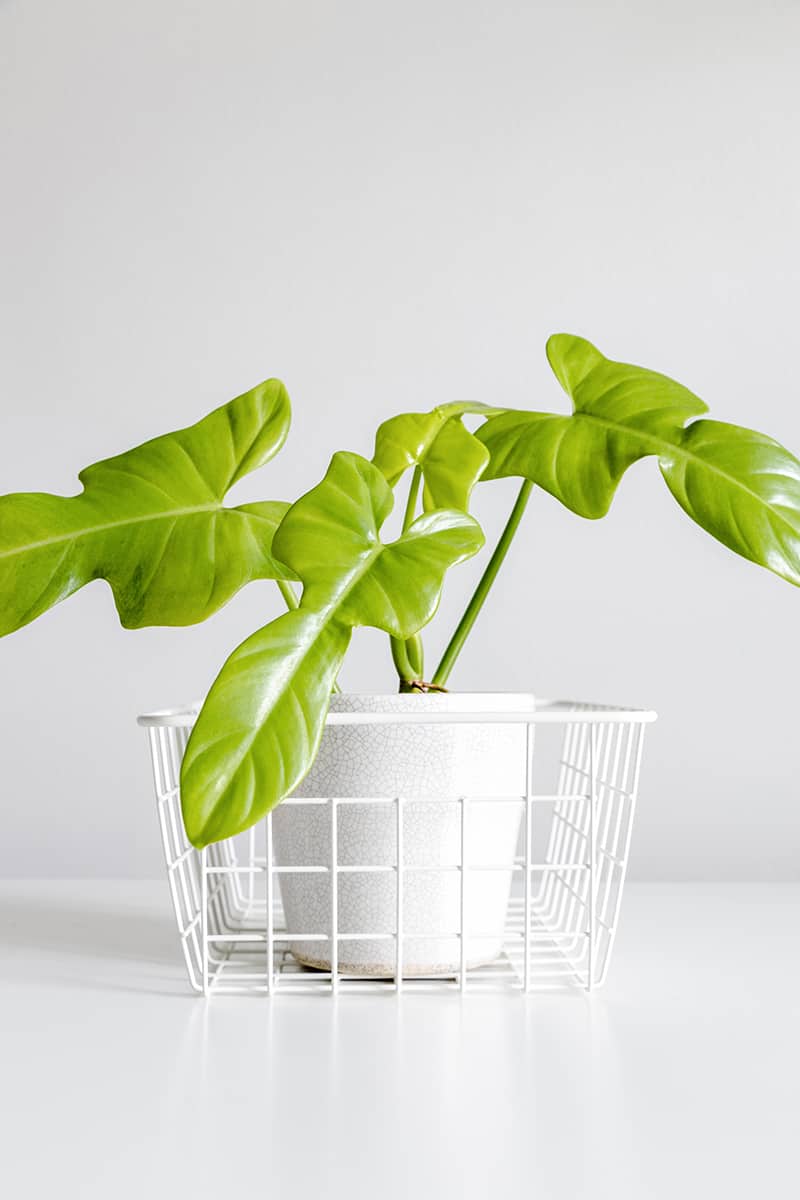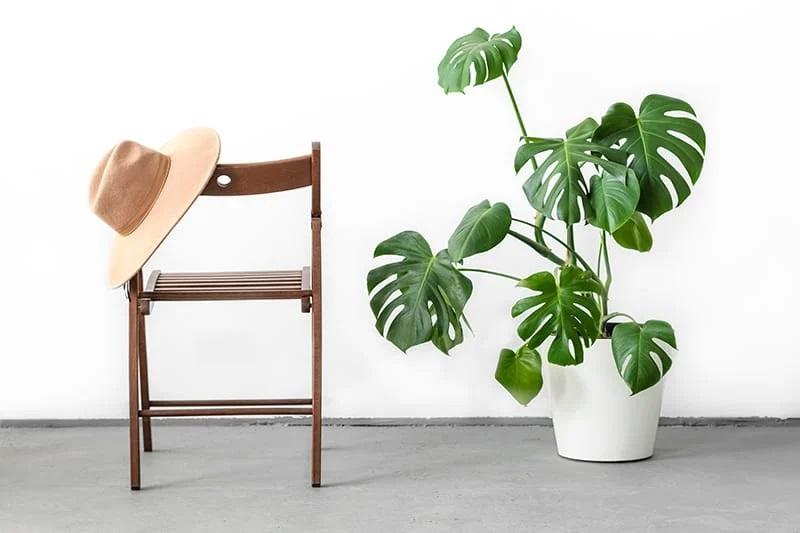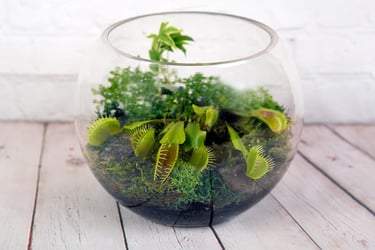- Home >
- Houseplants >
- Poisonous Houseplants
Poisonous Houseplants for Sale - Buying & Growing Guide
Filters
Price Range
Growing Zones
Plant Type
Sunlight
Mature Height
Plant Characteristics
4 Results
Poisonous Houseplants – Buying & Growing Guide
Houseplants can offer so many benefits to a home. They help improve air quality, add color and vibrancy to the décor, can help you sleep, and reduce stress, and caring for them can be therapeutic. It’s no wonder that houseplants have become an incredibly popular common feature in many homes. However, if you have pets or children, it’s important to do your research on a plant before blindly bringing it into your home. The risks of some plants outweigh the benefits, as they can be toxic to both people and pets. Some of the most popular houseplants which are of potentially dangerous poisonous levels are listed here.
Dieffenbachia
This plant is commonly called the Dumb Cane because of the effect it can have on people if they ingest it. Typical symptoms include difficulty swallowing and oral irritation, and these effects on the throat and mouth can render people speechless, or ‘struck dumb,’ hence the name Dumb Cane. Aside from being poisonous, this plant actually makes a very good houseplant. It is easy to care for and will adapt to a variety of lighting conditions in which other plants might not survive. The variegated patterns on the foliage make it an interesting and attractive plant to look at, and as it grows into a full leafy houseplant, it’s not hard to see why these are popular in people’s homes.
What Makes Them Toxic?
The cells of the Dieffenbachia contain insoluble calcium oxalate crystals. These crystals, if you were to hold them under a microscope, would look like tiny needles. If you chew or ingest any part of the plant, the tiny needles rubbing against your soft tissue will cause exactly the effects that you might imagine: a burning sensation, swelling, and redness. The worst effects are reported after the plant comes into contact with the mouth, as the lips and inside the mouth are particularly sensitive. However, caution should also be taken when handling the plant, such as when pruning or repotting, because the calcium oxalate crystals can also cause irritation if they come into contact with skin.
Toxic Level
Myths would have you believe that the Dieffenbachia is deadly and should be avoided, but this is not the case. Ingestion of the plant in most cases only produces mild symptoms, and in the worst cases will result in symptoms that persist for several weeks or months. Fatalities associated with the Dieffenbachia are extremely unlikely.
Safe Alternatives
Most instances of ingestion of the plant occur among pets and children under 5 years old who have a tendency to investigate things with their mouths. If you have pets or children, then it would be a good idea to refrain from keeping this plant in your home or keep it out of reach on a high shelf.
If you like the look of a Dieffenbachia but would prefer to keep toxic plants out of your house, a good alternative would be a Calathea. These plants have similar care requirements to Dieffenbachias and are happy in indirect light. They have a similar aesthetic to Dieffenbachias in that they have variegated foliage and typically form dense leafy displays and grow to a similar size. Many varieties of Calathea exist with different color variations on their leaves, but all have in common the fact that they are non-toxic to both pets and people, making them ideal safe houseplants.
Peace Lily
Lilies, which are typically brought into homes in cut flower bouquets, are well known for their poisonous properties and potentially fatal effect on cats. However, the Peace Lily is not a true Lily, instead belonging to the Spathiphyllum genus in the Araceae family. It is commonly kept as a houseplant and is especially popular because of its ability to thrive in low lighting, as well as for the elegant white flower like spathes it produces.
What Makes Them Toxic?
Like the Dieffenbachia, the Peace Lily contains calcium oxalate crystals. These tiny needle-like substances will irritate the lips, tongue, mouth, and throat if ingested, causing unpleasant but not typically dangerous symptoms. If the liquid contained within the plants stems comes into contact with skin, (during pruning, for instance), then the microscopic needles can cut the skin and cause irritation, redness, or swelling.
Toxic Level
While contact with the irritable substances contained within the Peace Lily can cause unpleasant symptoms, they are usually mild and do not cause long-lasting problems.
Safe Alternatives
If you are a fan of elegant-looking flowers, an orchid would be a safe alternative to the Peace Lily. While orchids will not tolerate low lighting in the same way that the Peace Lily will, they are fairly easy to care for and produce delicate and beautiful flowers.
Oleander
The Oleander Plant, or Nerium oleander, is a flowering shrub which can be grown outside as a bush, or dwarf varieties work well indoors as houseplants. Oleander flowers are most commonly pink and look similar to periwinkles, though you can also find varieties in red, yellow, orange, and white. This delicate-looking plant is relatively easy to care for, providing it gets ample sunlight.
What Makes Them Toxic?
The dainty and innocent look of the Oleander is very misleading, as it is, in fact, highly toxic. All parts of the plant are toxic, and ingesting even tiny amounts can have catastrophic results. The plant contains several harmful cardiac glycosides, including oleandrin, nerin, rosagenin, digitoxigenin, and olinerin. Oleander poisoning can cause a range of problems which affect the nervous system, the digestive system, skin, eyes, and circulation (Archives of Disease in Childhood).
Toxic Level
Oleander is one of the most toxic plants in existence. Ingesting just one leaf of this plant is enough to result in death. Even honey made from the nectar of an Oleander contains dangerous levels of toxins, and smoke inhalation from burning Oleander can also cause poisoning. It is poisonous to both humans and animals and has been used historically to induce abortions, as a means of suicide, and also intentional poisoning in criminal cases. Oleander is also used in animal poisons, such as rat poison, which illustrates just how harmful accidental consumption of Oleander could be.
Oleander poisoning results in a wide range of symptoms, not all of which will be present in every case. Symptoms can include nausea, vomiting, diarrhea, dizziness, seizures, loss of consciousness, headaches, blurred vision, drowsiness, rash, and an irregular heartbeat.
Even if you have pets or children who aren’t in the habit of chewing your plants, you would be well advised to refrain from growing Oleander due to the severity of the toxicity levels should an accident occur.
Safe Alternatives
If you’re looking for a flowering houseplant to brighten up your home, an African Violet would be a good alternative to an Oleander. The blooms, similar to the Oleander, are bright, delicate, and elegant-looking. The African Violet is a little fussy with regards to care conditions, but if you can get it right, the plant is very rewarding to grow. If you aren’t prepared for the challenge of growing African Violets, a Gerbera Daisy would be another good safe alternative to bring a splash of color to your interior.
Pothos
This plant, scientifically known as Epipremnum aureum but more commonly called Devil’s Ivy, is a trailing or climbing plant that is popular in homes thanks to its ability to grow almost anywhere. The Pothos is almost indestructible. It will tolerate a wide variety of lighting positions and can cope with drought-like conditions if you are forgetful when it comes to watering. The Pothos has attractive, heart-shaped leaves that are available in solid green variations or variegated patterns. Given that they thrive on neglect, they are particularly popular in offices, shopping malls, and other public places. They are good at purifying the air, making them a healthy addition to most indoor areas.
What Makes Them Toxic?
Pothos contains insoluble calcium oxalate crystals, which are released when the leaves or stems are sliced open. Chewing or biting the plant will cause the crystals to induce unpleasant symptoms on the victim, especially in the mouth and throat, and potentially in the digestive tract.
Toxic Level
Children and pets are most commonly affected by this plant. Symptoms typically include lip, tongue, and throat irritation, but external soft tissue can also be affected if you are handling the plant without protective gloves. The toxicity level is not considered to be life-threatening, and incidents with this plant are usually mild. In very rare cases, ingestion of the calcium oxalate crystals can cause the throat to swell, which may interfere with breathing.
Safe Alternatives
A good alternative to the Pothos is the Hoya Plant, also known as the Wax Plant. It has a trailing habit very similar to Pothos, along with pointed foliage available in both solid green and variegated varieties. It is quite a hardy houseplant, much like the Pothos, though it will struggle in dark corners.
Philodendron
There are many types of Philodendrons commonly grown as houseplants, including the heartleaf philodendron, and philodendron selloum. They are easy-care plants that like bright, indirect light and moderate watering. They come in both climbing and non-climbing varieties.
What Makes Them Toxic?
As part of the Araceae family, the toxic element of the Philodendron is insoluble calcium oxalate crystals. These tiny needle-like structures can puncture or tear the skin, causing particular irritation when the plant is chewed or ingested. Ingestion of the plant causes the most unpleasant symptoms, including vomiting, diarrhea, and stomach pain.
Toxic Level
Philodendrons are considered to be mildly toxic, with serious side effects extremely unlikely. Very large amounts of the plant would have to be eaten for it to result in anything more than a tummy ache, especially in an adult. In very rare cases, pets may experience severe side effects from ingesting this plant, such as difficulty swallowing or breathing if the sharp calcium oxalate crystals have caused burning or swelling in the throat.
Safe Alternatives
A good alternative to a Philodendron is the Cast Iron Plant, which offers a striking display of green foliage. As the name implies, the Cast Iron Plant is almost indestructible and will tolerate a wide variety of care conditions.
English Ivy
English Ivy, or Hedera helix, is a climbing or trailing vine which is commonly grown both indoors and outdoors. When grown in the wild, it is considered mildly invasive, but as a houseplant, it is popular due to its ability to filter toxins from the air and the ease with which it grows.
What Makes Them Toxic?
English Ivy contains several toxins that have ill effects on both humans and animals. Saponins are contained in the leaves, stems, and berries of the plant, which can result in severe cases of contact dermatitis. The plant also contains falcarinol and didehydrofalcarinol, which are both allergenic toxins. In people who are sensitive to these chemicals, an intense burning can result from contact with the liquid inside the plant.
Toxic Level
The level of poisoning will depend on the amount of the plant ingested or the sensitivity of the individual who comes into contact with a damaged plant. Where many vines were ingested by cows, reports found the animals to be sick for a few days, but they quickly made a full recovery. In humans who have eaten the berries of the plant, there have been reports of convulsions or even comas. However, the berries are very bitter tasting, and it is unlikely that anyone would eat an amount large enough to cause these results. The plants are poisonous to humans, dogs, cats, and cattle (Canadian Biodiversity Information Facility).
Safe Alternatives
Swedish Ivy is an excellent alternative to English Ivy. It grows in a very similar way, cascading from hanging baskets or trailing down from shelves. It is easy to care for, needing very little attention and thriving in a variety of settings. Swedish Ivy has plentiful evergreen full foliage and is a safe alternative to English Ivy for both humans and pets.
Sago Palm
The Sago Palm, or Cycas revoluta, is a stunning tropical plant that brings an exotic feel to homes. In spite of its common name, it is actually not a true palm and is instead a Cycad, one of the earth’s oldest types of plants. It is incredibly hardy and easy to care for as a houseplant, though this is less true when grown outside as a landscaping plant. It has feathery foliage, which enjoys bright indirect light, and infrequent waterings.
What Makes Them Toxic?
All parts of the Sago Palm are toxic, though it is the seeds that are most harmful. The plant contains cycasin, which is a highly toxic chemical causing liver problems in humans and pets.
Toxic Level
This plant is highly toxic and dangerous. When ingested, resulting symptoms can include vomiting, diarrhea, paralysis, seizures, coma, increased thirst, increased urination, yellowing of the skin and gums, and bruising. Ingestion of this plant will typically lead to liver damage and even liver failure and death, so it is imperative to seek professional help from a doctor or veterinarian if any human or pet is suspected of having ingested a part of this plant.
Safe Alternatives
Pets commonly avoid going near this plant, but if you are concerned, it is always better to be safe than sorry and avoid keeping this plant in your home. If you like the tropical palm style of plant, there are several houseplants that would make safe alternatives to the Sago Palm. The Areca Palm, Kentia Palm, and the Parlor Palm are all toxin-free plants that bring an exotic style into the home without the risk of poisoning your loved ones.
ZZ Plant
The zamioculcas zamiifolia, more commonly known as the ZZ Plant, is a popular houseplant for a whole host of reasons. It filters toxins from the air, resulting in better air quality in the home, has a very unique look with intense green glossy foliage, and tolerates a wide range of care conditions. The plant is a favorite for people who are new to growing houseplants, as it will thrive in spite of neglect or too much attention. The ZZ plant is an ideal houseplant to brighten up a dark corner, as it grows well in low light but will also grow equally well in direct sunlight. It is also not fussy about its watering schedule. It can handle being overwatered (within reason!) and can also tolerate periods of drought.
What Makes Them Toxic?
Although the ZZ Plant is good for filtering toxins from the air, it sadly also contains toxins of its own. These come in the form of insoluble calcium oxalates, much like the Dieffenbachia and Caladium, as the ZZ Plant is also part of the Araceae family. The calcium oxalate crystals have sharp edges that can irritate the soft tissue in the body, most commonly leading to unpleasant side effects for children and pets.
Toxic Level
Like other plants in the Araceae family, you would have to ingest large amounts of the ZZ Plant in order for it to cause serious damage. Most likely effects of coming into contact with the sap of the plant are oral irritation, stomach pain, vomiting, diarrhea, and skin redness or swelling. It would be wise to handle the plant wearing gloves if you are pruning or repotting it, as its sap could irritate your skin. At the very least, wash your hands after touching the plant to prevent sap on your skin from making its way to your mouth or eyes. However, toxic levels of this plant are mild, and serious side effects are extremely unlikely.
Safe Alternatives
If you are concerned about the potential side effects of the ZZ Plant, a safe alternative would be a Boston Fern. These plants have interesting green foliage, and they enjoy indirect light.
Caladium
Caladiums offer a dazzling display of foliage, with leaves which are typically variegated in patterns of green, red, purple, pink, and cream. The leaves can grow to a very large size, which adds to the dramatic look of the plant. In spite of being very attractive, Caladiums are not enormously popular as houseplants as they can be very fussy about their care conditions, and typically need an experienced grower who understands their needs well.
What Makes Them Toxic?
Caladiums are part of the Araceae family, and therefore contain insoluble calcium oxalates much like the Dieffenbachia. The calcium oxalate crystals have a needle-like composition that can make tiny tears in the soft tissue inside the mouth, throat, gastrointestinal tract, as well as on exterior skin.
Toxic Level
Toxicity levels of the Caladium Plant are quite mild, and large amounts would have to be ingested to affect an adult. Unpleasant symptoms are more likely in children and pets who would be more sensitive to the effects of the calcium oxalate. Caladium poisoning, in any case, is usually mild, though in very rare cases, ingesting the plant could cause swelling of the throat, which, in turn, would lead to difficulty breathing. Typically, the side effects of ingesting this plant include irritation of the lips, tongue, and mouth, while side effects of handling the plant can include contact dermatitis, redness, and swelling of the skin.
The plant is poisonous to both humans and pets, but problems caused by it are usually mild. If you suspect your pet has ingested Caladium, you may notice the animal has excessive drooling, difficulty swallowing, and they may vomit. You can ease symptoms by offering drinks of water or milk, but if symptoms persist, you should seek a vet’s advice.
Safe Alternatives
If you would like a non-toxic alternative to the Caladium, a Calathea would be an excellent choice. Calatheas offer very similar aesthetics to the Caladium, with a wide variation of variegated leaf patterns in shades of green, purple, and cream. There are also varieties that have very large leaves like the Caladium. As an added bonus, Calatheas are much easier to care for than Caladiums and will require much less attention in order to thrive.
